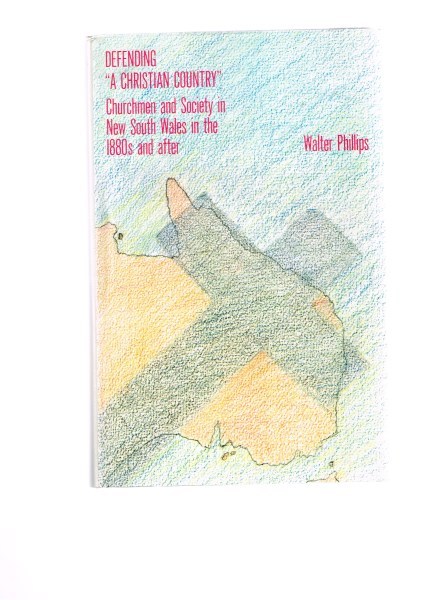
- Free Article: No
- Contents Category: Religion
- Review Article: Yes
- Article Title: Churches in Public
- Online Only: No
- Custom Highlight Text:
Mapping the boundaries of relationships between church and state is a vital part of religious history. Walter Phillips makes a major contribution to our understanding of the changes which followed the ending of state aid in the nineteenth century. The pressures of voluntaryism made the retention of vision of a Christian country very hard, for protestant individualism and denominational competition made the shaping of a common ethos impossible. Nevertheless, Phillips makes it clear that the protestant churches, through their leadership, put up stiff resistance to the trends of the times.
- Book 1 Title: Defending ‘A Christian Country’
- Book 1 Subtitle: Churchmen and society in New South Wales in the 1800s and after
- Book 1 Biblio: University of Queensland Press, $30.00 pb, 332 pp
- Book 1 Cover Small (400 x 600):

- Book 1 Cover (800 x 1200):

He establishes important continuities between the attitudes on social issues hammered out in the 1880s and those which were finally substantially rejected by the 1960s. It is a delicate task to explore areas which have been clouded by such passionate emotions. Phillips has done his work with sympathy and insight into the ambiguities of personal motive and the complexity of the social areas so discussed. The narrative is an account of the views of church leaders, or those who thought they were.
The research rests on a thorough reading of the published sources, together with some private papers. A convincing case is argued for concentration on Sydney, for Dr Phillips believes that the real battles for the future of the churches were fought there. Further research on smaller cities and rural areas is clearly needed to establish just how far they reflected metropolitan concerns. Three sections provide the book’s framework – a discussion of the relationship between churches and the populace, an examination of the intellectual conflicts between belief and unbelief and a concluding section which explores the relation of churches and government.
One of the strengths of Phillips’ study is the way in which he relates the numerical growth of protestant churches to religious and intellectual crosscurrents. He shows the limitations of evangelism and revivalism so far as winning new converts was concerned. The importance of these movements for protestant identity is very clearly shown, as is the way in which revivalists often reinforced particular moral emphases about sexuality and temperance. Despite the impact evangelists had on the faithful, converts from the outside were few and Phillips’ statistics about church attendance declining by 1890 are very telling.
Such attempts, as the Methodist Central Mission’s, to make the churches more attractive and credible to an uninterested urban working class, touched only the edges of the problems. The churches had some spokesmen who provided believable answers to the biting attacks of freethought lecturers. Divisions between orthodox Christians and those of liberal tendencies carried over from theological issues to judgements about social questions.
Phillips shows the variety of views competing in Sydney and is able to show that there was a good deal more interest in social problems than Bollen has allowed. Influential clergy explored subjects like socialism, the role of unions and ways of ensuring justice in capitalist institutions. They do not appear to have made many converts, for popular Christian attitudes have remained much more sharply focussed. Indeed, the value of this book is that it raises fascinating questions about the reception of ‘advanced’ ideas and underlines the importance of local research to understand how congregations thought about such matters.
Subjects like sabbath observance, religious education, divorce law reform and public recognition of religion in the constitution and parliament are given careful analysis. All in all. Dr Phillips has written a very substantial book which is likely to remain a standard work for many years. Books of some depth and clarity are needed for other states and later periods if the positive and negative influence of Christianity in Australia is to be better understood.


Comments powered by CComment